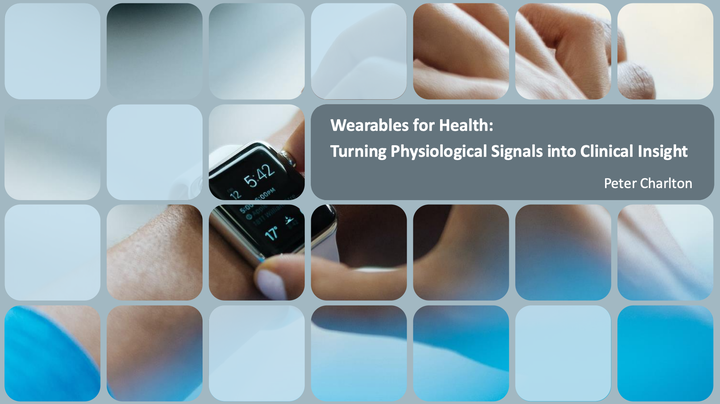
Video
Slides
Slides from the accompanying presentation are available here.
Abstract
Physiological signals measured by wearables and mobile health devices hold great promise for enabling health monitoring in daily life, and informing clinical decision-making. Here, I suggest that three questions hold the key to clinical impact: what information do these signals contain, how can it be reliably extracted, and how should it be used in practice?
In this talk, I explore each of these questions through recent studies. First, I will show how modelling and analysis of wrist photoplethysmography (PPG) signals can reveal the cardiovascular properties and contextual factors (such as posture and sensor placement) that shape these signals. Second, I will discuss methods to extract information robustly, including benchmarking open-source algorithms for beat detection, developing a state-of-the-art PPG beat detector, and strategies for identifying reliable data segments. Third, I will present lessons from clinical applications, including our finding that atrial fibrillation diagnosis from single-lead ECGs collected on mobile devices is only moderately reliable, highlighting the importance of quality control and the potential of human-ML collaboration.
Together, these findings demonstrate opportunities and challenges of translating wearable data into clinical impact, and point to key considerations in the design of wearable systems for healthcare.